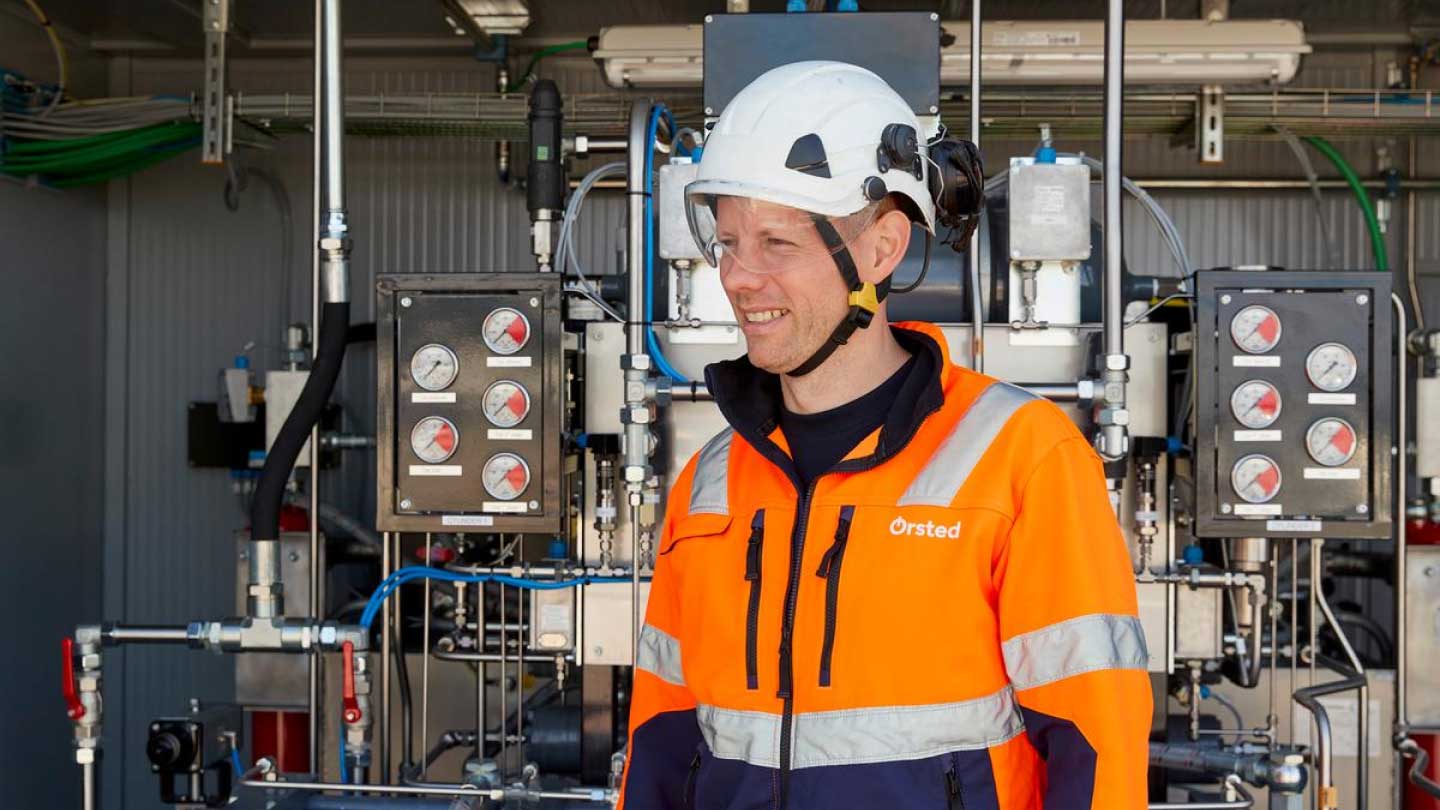Using water and renewable energy to make hydrogen gas
Hydrogen is the most abundant element in the universe. On Earth, it’s mostly found in water, where it’s the H in H20 – but for us to use it as an energy solution, we need it in gas form.
Hydrogen as a gas can for example be used to power the transport sector. It’s produced by splitting water into hydrogen and oxygen using electricity – a well-established process called electrolysis.
The hydrogen is collected and used, while oxygen is released as a by-product if there’s no need for it locally. The electrolysis process also produces heat, which can be used in district heating systems.
Hydrogen gas can be produced using fossil fuels, biogas, nuclear power, or renewable energy. At Ørsted, we’re only focusing on projects that will use energy from renewable sources to produce renewable hydrogen, ensuring that the fuel is carbon-neutral.

